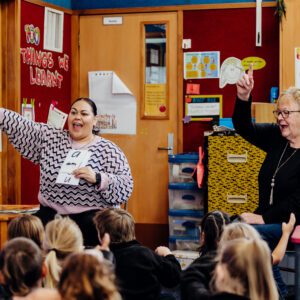Starting the day in a grounding, affirming and safe environment can make a world of difference for tamariki who carry invisible backpacks. These are the students who arrive at school with early childhood trauma, or simply missing key early nurturing experiences often taken for granted by their peers.
Nurture groups are an evidence-based way to facilitate stability and emotional regulation skills before students return to the classroom for the rest of the day.
At Glenview School, a primary school in Porirua East, the first hour of the day is blocked out for selected students to build relationships and participate in activities like cooking or crafts with kaiāwhina. They’ve even started the day with a bit of unofficial dog therapy, through visits from police education officers, says Glenview School principal Lynda Knight-de Blois.
“It’s about helping students feel safe, because so much of the work is about that nervous system sensing safety. We might look at a child and say, of course they’re safe in this environment. But if for some reason, their nervous system is not physiologically sensing safety, then they’re not going to be regulated.”
These small groups are led by support staff and speak to the skill, patience and contribution learning assistants provide in supporting vulnerable students to thrive at school.
Developed in London in the 1960s by renowned educational psychologist Marjorie Boxall, today Nurture groups are common practice across the UK; implemented in over 2000 schools. These short-term, staff-led interventions are focused on supporting the social, emotional and behavioural needs of select children and young people in order to remove barriers to mainstream learning. They emphasise emotional literacy, language development and communication – offering a warm, calm and consistent environment that helps to rebuild missing early nurturing experiences and supports students to develop positive relationships with both teachers and peers.
In Aotearoa, the Nurture Provision classroom at Papanui High School has a ‘feelings jar’ by the door. Every weekday morning, a small group of year 9 students taking part in the Nurture provision program begin their day by placing a coloured tile in the jar.
“It’s about helping them to identify and name their feelings,” says Canny Gaffney, who leads the programme in Ōtautahi Christchurch. “Green means ‘I can handle this’, blue is ‘I’m feeling tired or run down’, yellow is ‘I’m anxious or nervous’, and orange means ‘I’m feeling upset, or angry’.”
Gaffney noticed her students started talking more about their feelings through this activity. “They come up to me saying ‘Oh, Mrs Gaffney, can I put a yellow and a blue tile in today because I feel both?’”
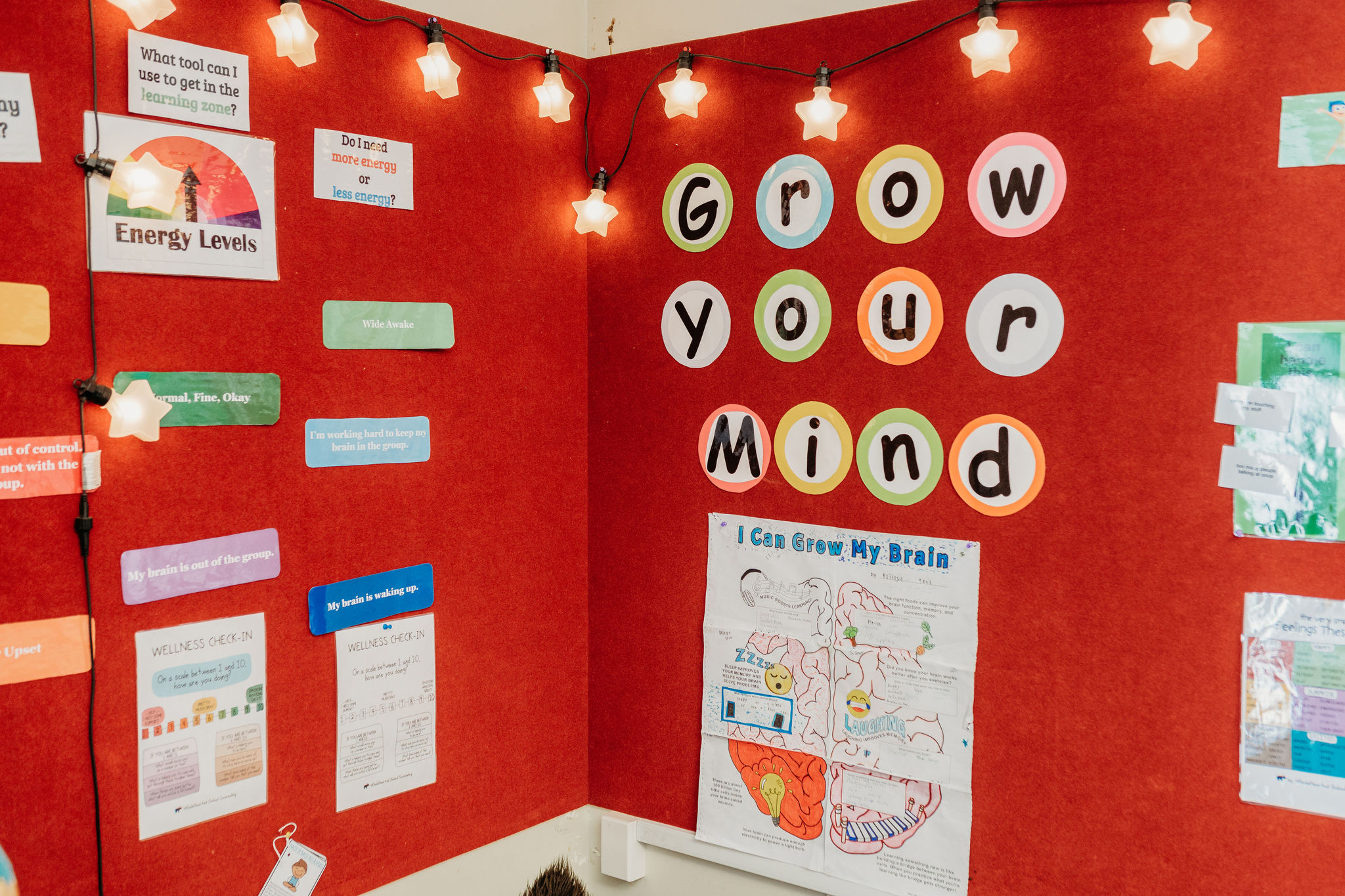
The shift is a significant one, because typically the students on the Nurture Provision programme struggle to articulate how they feel. For Gaffney, Nurture Provision just makes sense. “You have to connect before you correct. Everybody needs nurturing – it’s instinctive. We have to meet basic needs before we can teach – whether the child is 3, or 13. Young people simply can’t perform in a classroom unless those needs have been met. You cannot teach an unhappy child.”
“It’s about connection – turning up every day to a place that feels like home, talking to an adult, seeing what the day is looking like,” says Gaffney. “You get structure and feedback from an adult who can support your needs for the classroom; a daily check-in that might not happen at home.”
“Breakfast is such an important part of Nurture – getting the students to engage in a relaxed environment. There is no pressure to eat, but we all sit around the table and have a conversation […] Then we often wrap up with an affirmation. We say, ‘I’m amazing’, because often our students find that really hard to say.”
“Everybody needs nurturing – it’s instinctive. We have to meet basic needs before we can teach – whether the child is 3, or 13. Young people simply can’t perform in a classroom unless those needs have been met.”
Nurture Provision is focused on supporting students to form attachments to loving and caring adults at school. It’s also about providing a space where students can make a calm transition into the rest of their day. The programme is suitable for students across age ranges and can be adapted to meet the culture needs of the school.
Who are Nurture Groups for?
Groups are kept small, usually no more than ten or twelve. The students suggested for the program are often the ones with fight or flight responses activated or are shut down and withdrawn, says Knight-de Blois.
Students are identified as candidates for Nurture Provision through the Boxall Profile, a tool for structured observation of children in the classroom. The assessment gives teachers and other education providers a clear view of a student’s abilities and any potential learning obstacles. At the end of the year, the students’ Boxall results are revisited.
“Our tamariki are often the ones stranded outside the classroom, refusing to go in – or if they do walk in, the first thing they want is a referral to leave, because the classroom is too noisy or they’re experiencing sensory overload,” says Gaffney. “Some may be hyper, some may be anxious, some may be emotionally vulnerable, some may be angry – whatever their emotion is, they need that breathing room before they can embrace a day of learning.”
For ākonga at Papanui High, Gaffney notes that the physical changes, academic pressures and social dynamics are some of the biggest challenges they face. “These interventions help build resilience and develop necessary tools to thrive in this critical period.”
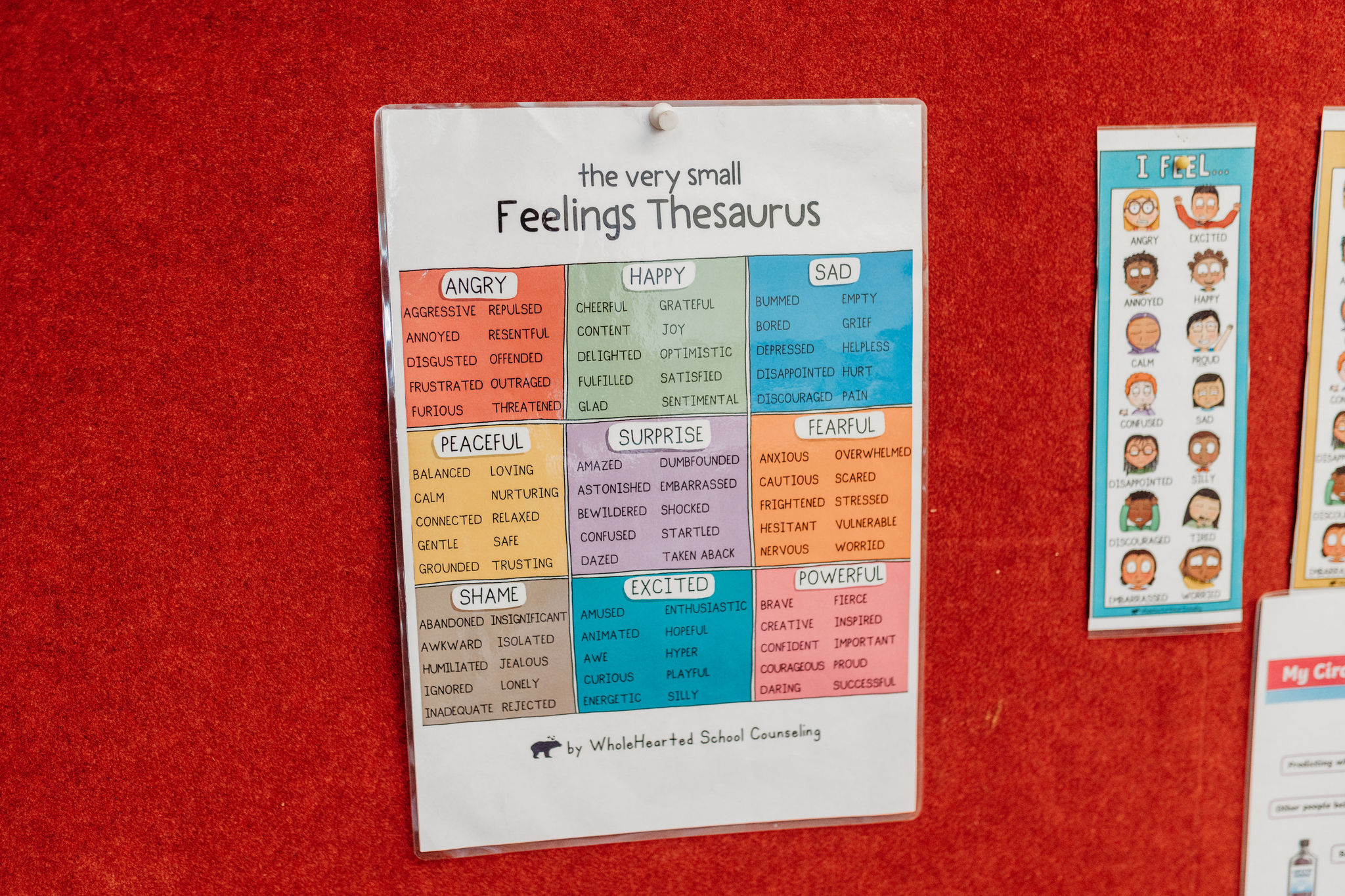
Invisible Backpacks
Trauma is complex and profound in the impact it can hold for tamariki. Ongoing unpredictable stress can often be more impactful to the developing brain and nervous system, than a one-off traumatic event. And within these nuances, stable home environments and robust family networks often provide a strong buffer for children against trauma and stress.
These are some of the considerations that Knight-de Blois keeps top of mind when advocating for neuroscience informed education. Staff at the Glenview school are encouraged to learn about the brain and the nervous system, so adults can respond more effectively to distress and trauma.
This looks like understanding the sensory processing complexities for neurodiverse tamariki, says Knight-de Blois, while acknowledging the ongoing, unpredictable and uncontrollable stress many families experience in the community. Glenview is a primary school in Porirua East with a diverse bunch of students, including tamariki with whānau from refugee backgrounds. While these children haven’t necessarily experienced the traumatic impacts of war and conflict first-hand, they come from families who have.

Knight-de Blois believes starting from this foundation helps educators build a deeper understanding of what’s going on behind-the-scenes for tamariki. For Glenview School, Nurture Learning groups have been run by two support staff since 2020. Knight-de Blois praises the programme for its ability to build relationships with students and help their nervous systems sense safety.
Results
Knight-de Blois has noticed a dramatic reduction is disruptive behaviour, from up to 400 in a year down to barely any in 2023 at Glenview School. Other positive outcomes include better attendance, staff retention, and academic achievement — particularly for those students struggling with dysregulated behaviour. “Once those students settled down, the whole classroom environment was more settled in academic achievement.”
Since the start of 2022, the program has since made itself redundant due to its success. “We don’t need it anymore because we’re not seeing the same level of needs. Tamariki feel nurtured and safe within their own classrooms,” says Knight-de Blois.
Working with Kathryn Burkett, an expert in the intersection of education and neuroscience, Knight-de Blois has been working on rolling out a version of the Nurture Learning Programme across the kāhui ako.
“We’ve sourced external funding so we can pay the schools to put in the extra support staff hours,” says Knight-de Blois. This looks like an hour a day dedicated to the kaupapa, along with release time to do training, supervision and research. Currently, there is capacity to take on a group of 20 rangatahi at Porirua College, and ten children at the other schools.
“We prioritize spending on support staff.”
“We prioritize spending on support staff,” says Knight-de Blois. And it’s because she knows students’ respond better and can heal through regular connection with people they know, trust and from their cultural background. The expertise support staff and teacher aides bring to a school environment are invaluable.”
Programmes like Nurture Provision come at a time of significant need for schools in Aotearoa. In a recent NZEI Te Riu Roa survey in 2020, 63% of respondents believed their schools did not have the resources needed for students to participate fully. There’s been a sustained gap over the years, as in 2018, 62% of secondary school principals said they need, but cannot access, external expertise to help their school support and work with students on their wellbeing – a sharp rise from 36% in 2015. This was especially true in decile 1 and 2 schools.
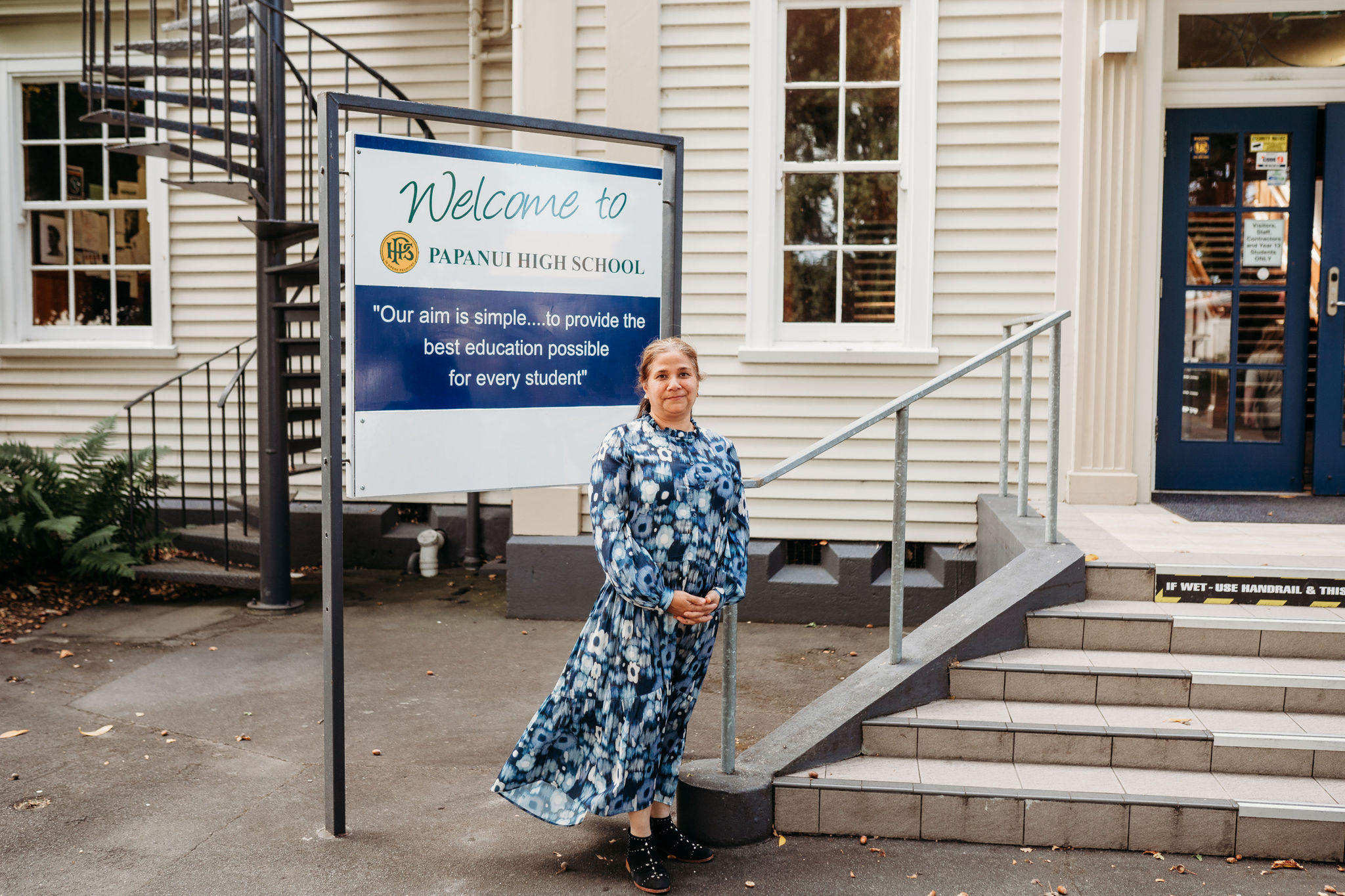
At Papanui High, the Nurture Provision programme has supported over 60 students. At the end of their year in Nurture, Gaffney revisits their initial Boxall Assessment scores and notes the difference. In addition, surveys are completed by students, staff and parents, all of which are combined with the Boxall scores to paint a picture of student development.
The results have been largely positive. Comments from staff such as “[This student] is much more willing to engage in interactions with teachers, and more open to discussing alternatives” or “[This student] has better emotional regulation and is much more positive” speak volumes. One parent noted “Nurture has really helped my daughter. She likes coming to this class.”
The students themselves articulated the value of Nurture. Comments like “It’s my safe place” or “We talked about hard things” mean the world to Gaffney, who emphasises that when it comes to measuring success, it’s the little moments that are her biggest wins.
“I have students who walked into school looking sad and unengaged, and now I see them wave. It’s the smallest successes that are important,” says Gaffney. “I don’t mind what they achieve in English or Maths – for me it’s about breaking down emotional barriers. Success is the students who, despite the odds, say ‘Yes, I want to be here’. From not talking, to nodding or to asking, ‘Hey Mrs Gaffney, what’s on my timetable today?’ Or I get an email from a teacher who says, ‘[This student] showed up to class today and we had a great conversation’ – this is the same student who kicked a wall or punched a chair.”
For Gaffney, this is a sure sign that something is working. “Magic happens every day, but we don’t always see it right away – sometimes it takes a year or two years. We’re working with children – nothing is instant.”
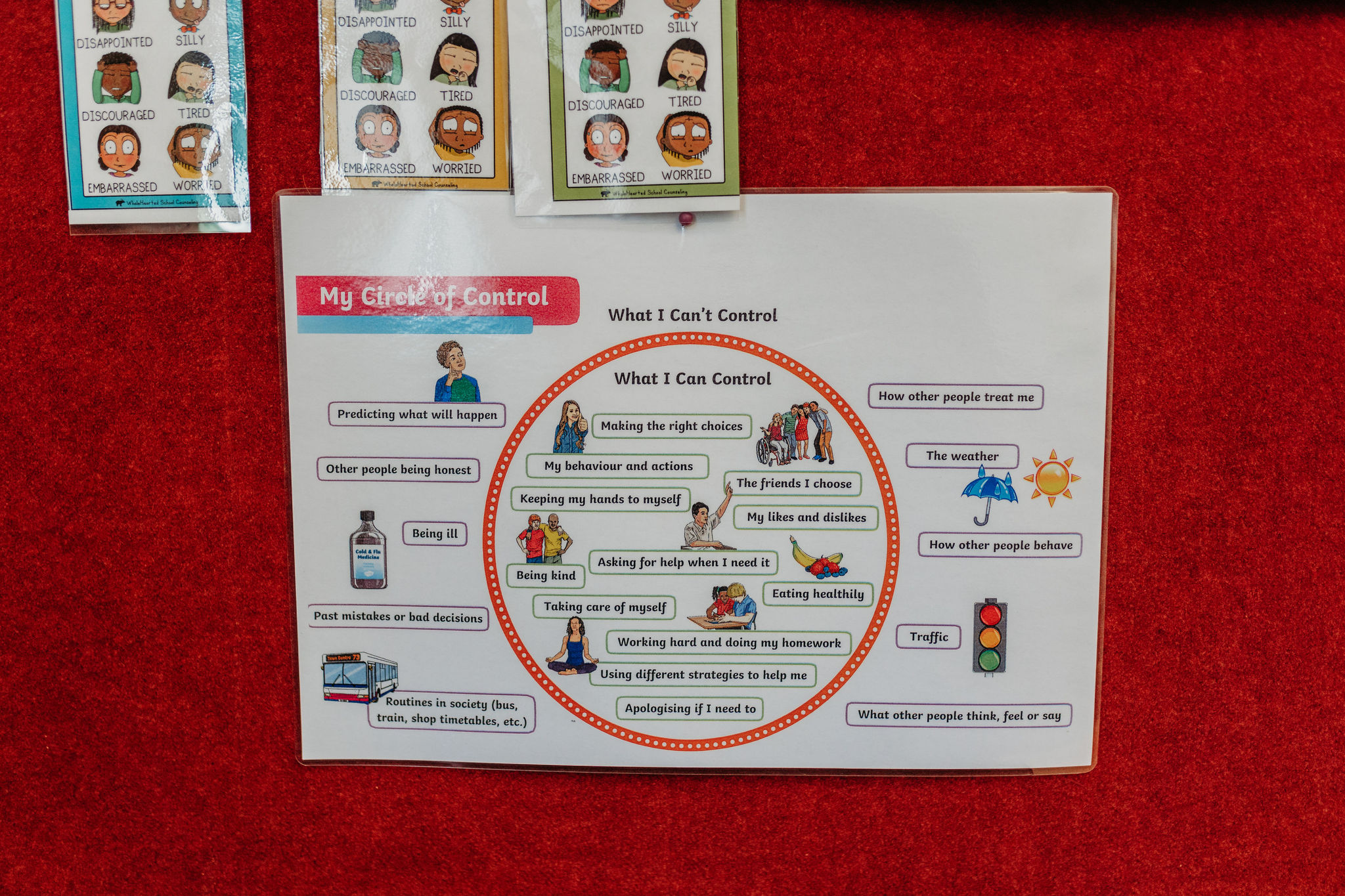
In the UK, Nurture is deeply embedded into education, where children can be in their own Nurture Group for the whole day. “We’re early adopters here,” says Canny, “but we won’t be the last. It’s not expensive, you just need the full support of school leadership, and the right person to run the programme.”
The right person is someone like Canny. Non-judgmental, deeply empathetic and offering clarity and kindness in abundance. As a Nurture Provision Practitioner, she’s worked in this space for over 12 years, and is currently completing a masters level paper on Theories and Practices of Nurture Provision.
“I can’t ever be sarcastic with these students,” she notes. “No sharp rhetorical questions like ‘what do you think?’ if they’ve asked a question. They get enough of that elsewhere.”
Invaluable Support Staff
With that in mind, retaining passionate learning assistants like Canny Gaffney is one of the key priorities moving forward for those seeking to uplift the sector. In 2017-2019, NZEI Te Riu Roa and the Ministry of Education did an in-depth exploration of the role of teacher aides and learning assistants, identifying that the role “is diverse and varied”. Their report identified 16 general areas of responsibility that they may undertake – noting that these areas are wide-ranging: “from delivering specific learning programmes to managing challenging behaviour, providing cultural support for students, and providing care and support for health conditions.” The study also identified valuable, less visible skills; particularly empathy/relationship skills, initiative, patience, and flexibility.
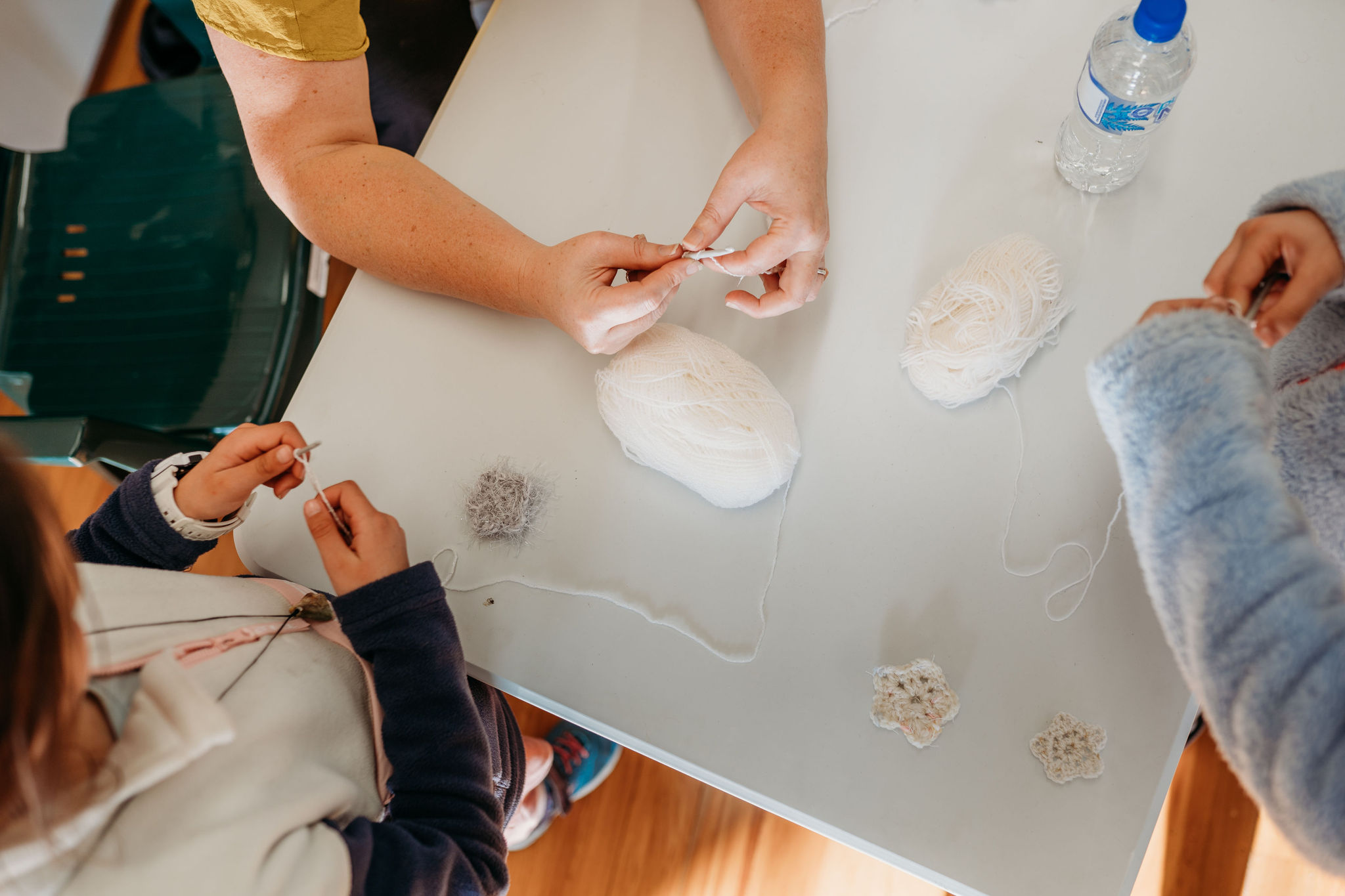
Mei-Lin Hansen, a Support Staff National Caucus Kaiāwhina Tautoko (SSNCKT) co-representative based in Tāmaki Makaurau, believes programmes like Nurture Provision should be available to students across the country. “Many of us carry ‘invisible backpacks’ – and there should be a requisite number of specialised TAs like Canny to lead these programmes.”
While there are similar programs in place across other schools in Aotearoa, such as the Mana Potential program, Hansen finds it disheartening that tamariki focused programs are still few and far between. She puts the lack of implementation down to the difficulty for schools to recruit and retain experienced, skilled teacher aides, learning assistants and support staff.
“It’s no surprise when the funding model is broken, teacher aides’ employment status is precarious, and professional learning and development is not guaranteed.”
It can be a discouraging picture – but for Mei-Lin Hansen, being an active member of SSNCKT has been an empowering and productive way to channel these frustrations.
“If you know there are ways we can work better and smarter in our schools and if you want to make a bigger positive difference for our tamariki/mokopuna, make it your mission to get your voice heard in the NZEI Te Riu Roa.” Hansen encourages educators and support staff to consider where their strengths lie, what they can offer and take the first step by attending a network meeting or local branch hui.
“You will thank yourself for doing so, your tamariki/mokopuna will benefit – and who knows where it might take you?”

For Gaffney, the vision is clear.
“Everybody needs nurturing. It’s a fundamental human need. And for many students across the country – and the world – those needs aren’t being met. So as difficult as it is, the responsibility sits with individual schools to decide whether those needs are more important than meeting students’ academic needs. Nurture isn’t a miracle room – and it’s just for a small cohort – but at least we’re doing what we can.”
To learn more, Canny Gaffney at Papanui High School and Lynda Knight-de Blois at Glenview School invite members to reach out and connect with them on trauma informed education.




